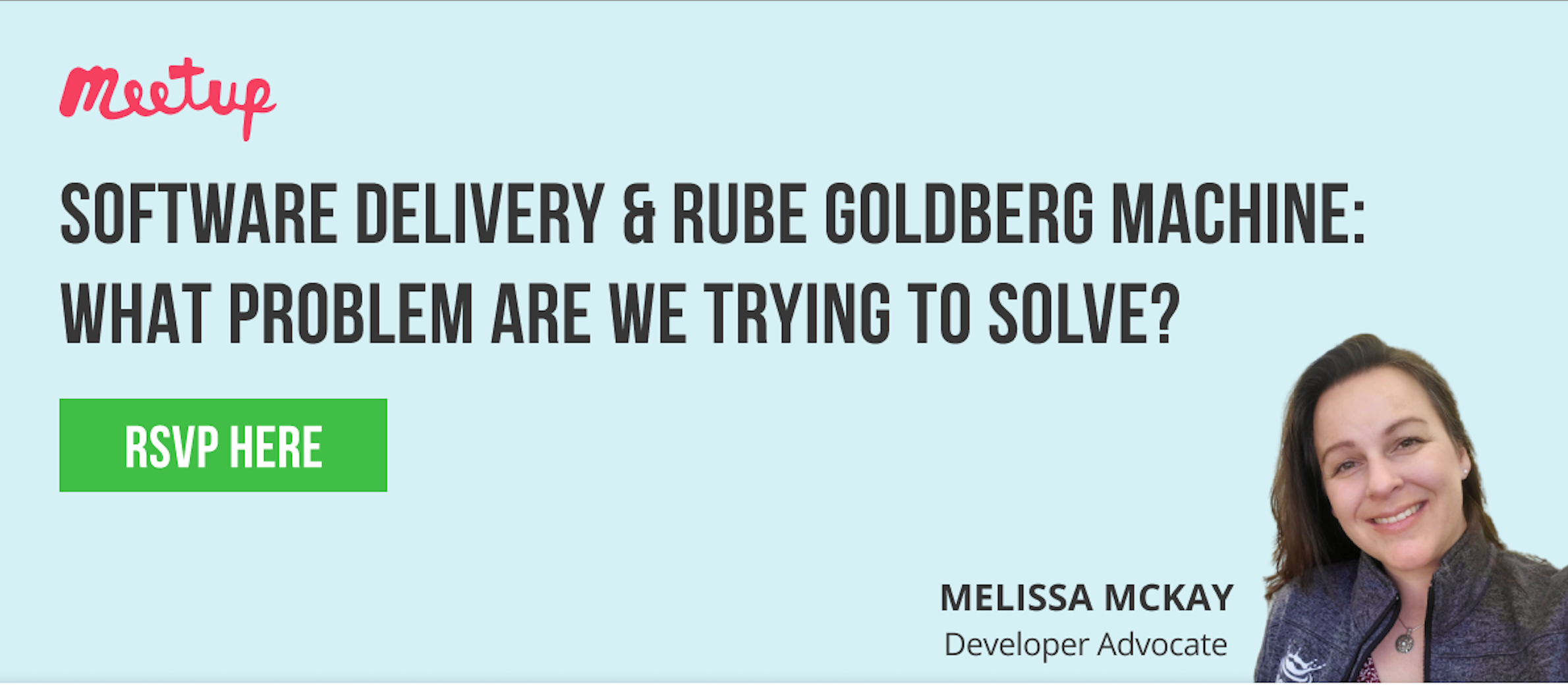Software Delivery and The Rube Goldberg Machine @ NGINX Meetup
February 16, 2023
2 min read

Software Delivery and The Rube Goldberg Machine: What Is the Problem We Are Trying to Solve?
The Software Delivery Lifecycle can be complicated. Depending on your architecture and your particular deployment environment, your team may find themselves cobbling together numerous different tools and frameworks. Each tool comes with its own history and is intended to solve a subset of issues. Sometimes teams find creative ways to use tools outside of their original purpose. The end goal is to ease the process, secure, deliver, monitor, reflect, make changes, and repeat. It’s a cycle of continuous improvement. This session will discuss some of the common problems that teams face during the development and delivery process, and how organizations come together to address them. You will leave empowered and with a call to action to become part of the solution.
Melissa McKay, Developer Advocate, JFrog
Melissa’s background and experience as a software engineer spans a slew of technologies and tools used in the development and operation of enterprise products and services. She is a mom, software engineer, Java geek, huge fan of unconferences, and is always on the lookout for ways to grow and learn. She has spoken at Code One and Java Dev Day Mexico and is part of the JCrete and JAlba unconference teams. She is currently a Developer Advocate for JFrog, Inc.
Twitter: @melissajmckay


